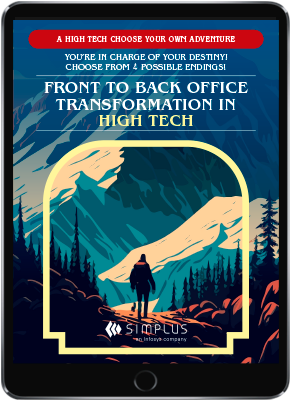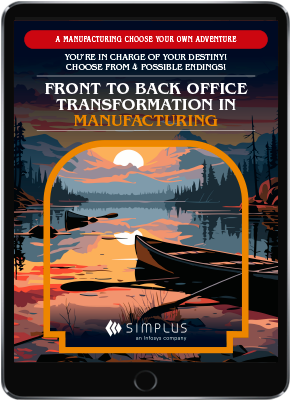Manufacturing is too often miscast as the laggard industry, perpetually stuck in the past and hindered by culturally stubborn resources. However, with the advent of innovative technologies like IoT and AR and a transition to more digitally-based operations, manufacturing is actually becoming quite modern and creating more cutthroat competition than ever with digital transformation initiatives.
That’s why, for 86 percent of manufacturers, digital transformation is a critical priority—but what does that buzzword really mean to manufacturing today? It means making the shift from old school business models that are too B2B focused and instead making room for a B2B2C, if not direct B2C, way of business. Putting the customer at the heart of everything will be the most advantageous path for forward-thinking manufacturers. But making such a change doesn’t just happen overnight.
To successfully take a manufacturing company from the traditional model of business to the modern era’s customer-focused demand, you should make sure your strategy includes these four critical elements:
Agility
It was true before the pandemic and it’s especially true two years into it: you have to be quick to adapt to succeed. Manufacturers must develop a culture and strategy for executing on sudden changes in customer demand, scale, and complexity. Organizations may do well doing one thing for a season, but disruption will inevitably halt any success from being too narrowly focused.
Additionally, manufacturers should prioritize agility for the sake of the bottom line: agile companies report growing revenue 37 times faster and with 30 percent higher profits than their not-so-agile counterparts. With increases like that on the line and lessons learned from the past two years, agility is certainly a critical priority for manufacturers.
CX-focused edge
This is arguably the most important element to a winning manufacturing sales strategy: leading with the customer experience approach. This means not just selling your product or service in one-off deals, but expanding your brand to also emphasize training, customer support, revised pricing models (SaaS or subscriptions), and product marketing.
This isn’t a new idea to the industry, but it’s picking up steam rapidly. According to IDC, 70 percent of consumer-facing manufacturers are leveraging more direct-to-consumer channels in their marketing, and 20 percent of those buyer journeys will incorporate more engaging multimedia to retain consumers and flesh out the experience for long-lasting loyalty. Similarly, manufacturers can’t neglect the B2B element: engaging partners, distributors, and suppliers through purchasing interfaces.
Flexible offerings and journeys
As manufacturing’s audience shifts or widens to include direct consumers, manufacturing strategists must make their customer journeys and offerings at large more flexible to capture the demand of day-to-day customers.
For example, the Harvard Business Review looked at the importance of having flexible customer journeys that hit close to home—literally—for the consumer: “Some [customers] might want to build a treehouse with their kids but don’t yet have a specific model chosen or the plans, instructions, or tools to realize it. What new offerings, journeys, or experiences might manufacturers of power tools create to enable customers to achieve this purpose?”
“[The journey] might start with [ads or emails], but link to a section of the company website organized by types of projects, from decks to sheds to treehouses. They might show multiple treehouse designs, filterable by size or the type of trees for which each is suitable. The detail page for each treehouse might show a video of the project from start to finish to build confidence in the customer and excitement among the family. All the tools and parts required might be listed, with options to buy them a la carte or as a full package.”
It’s journeys like these that are winning today in manufacturing—customer-centric and flexible every step of the way.
Collaborative culture
Finally, an innovative manufacturing sales strategy will not take off successfully without a collaborative culture in the organization. Sales is sales, but without team input from delivery, R&D, customer service, and even external partners or vendors in other industries, your sales will merely be one-off deals and fail to deliver both the customer-centric experience expected by consumers and the long-term relationships bringing in recurring revenue.
Engaging in cross-industry collaboration is especially lucrative for manufacturers today. Research from IDC found that manufacturers who do so have a 10 percent revenue increase and a 33 percent boost to customer engagement—benefits you can’t do without in today’s landscape.
Preparing your manufacturing organization for a more customer-focused sales strategy is no small task, and you’ll need thoughtful analysis to prepare your game plan for the pivot. Cloud applications like Revenue Cloud, Commerce Cloud, Experience Cloud, and more from Salesforce can support the change with ease, especially when you partner with Simplus’ team of advisory and implementation experts. We can assist you in your transformation initiatives and make a strategy that makes the most sense for your company’s needs and priorities. Reach out today.






















































0 Comments